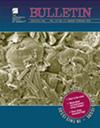藏北松潘-甘孜地块中东部曹陇-香卡里瓦地区晚三叠世两类花岗质岩浆的成因与演化:伟晶岩锂成矿意义
IF 3.9
1区 地球科学
Q1 GEOSCIENCES, MULTIDISCIPLINARY
引用次数: 0
摘要
伟晶岩型锂矿床是低碳能源金属的重要来源,一般认为是由强过铝花岗质岩浆高度分异形成的。然而,这些过铝质岩浆的母岩是火成岩还是沉积岩的问题一直存在广泛的争论。近年来,在西藏北部的西昆仑和喀西-松潘-甘孜地块发现了一条与晚三叠世花岗岩和(元)沉积岩密切相关的世界级伟晶岩型锂矿床带(长达2800 km)。本文对藏北可可西里-松潘-甘孜地块中东部玉树地区曹陇-香卡里瓦地区晚三叠世两类花岗岩进行了岩石学、年代学和地球化学综合研究。A型包括通天河-镇琴- zhadoo - zhaya - xiangkariwa (TZX)闪长岩和花岗闪长岩(218 ~ 212 Ma), B型包括曹龙二云母和白云母花岗岩(213 ~ 205 Ma),以及无矿、含绿柱石和含锂辉石的伟晶岩岩脉(209 ~ 196 Ma)。TZX闪长岩和花岗闪长岩含有不同数量的角闪岩和黑云母。它们具有不同的SiO2 (54.4 ~ 71.3 wt%)、MgO (0.72 ~ 7.26 wt%)含量和Mg#值(40 ~ 70)。部分低SiO2 (54.4 ~ 58.5 wt%)样品具有与高Mg安山岩相似的地球化学特征,如高MgO含量(5.24 ~ 7.26 wt%)和高Mg#值(61 ~ 70)。TZX闪长岩和花岗闪长岩的富集程度较低(86Sr/87Sr)i(0.7080 ~ 0.7118)和εNd(t)(- 4.8 ~ - 8.0)。而曹龙二云母和白云母花岗岩则赋有丰富的白云母(外加电气石和石榴石),并具有强过铝质特征。曹龙花岗岩和伟晶岩的地球化学特征是SiO2含量高(68.8 ~ 79.8 wt%), MgO含量低(0.01 ~ 0.10 wt%), Mg#值低(4 ~ 23)。εNd(t)值为- 8.8 ~ - 11.4;花岗岩:−8.8 ~−10.8;伟晶岩(−9.2 ~−11.4)的锆石δ18O值与松潘—甘泽(元)沉积岩(−7.4 ~−12.9)相似,但比TZX闪长岩和花岗闪长岩的锆石δ18O值高(11.6 ~ 12.1)。此外,高龙花岗岩和伟晶岩中钾长石和白云母中Cs含量的增加与K/Rb比值的降低相对应。结合河西-松潘-甘孜地块晚三叠世花岗岩类和(变)沉积岩,认为TZX闪长岩和花岗闪长岩极有可能是由交代岩石圈地幔部分熔融后广泛的分离结晶作用形成的。相反,曹龙二云母和白云母花岗岩可能纯粹是由(变)沉积岩的部分熔融而非闪长-花岗闪长岩浆演化而成。综上所述,草龙-香卡里瓦地区存在两种不同来源的花岗质岩浆。最后,曹龙伟晶岩最可能是由两云母花岗质岩浆的极端分异形成的,而不是由闪长-花岗闪长质岩浆形成的。因此,从(变)沉积岩演化而来的岩浆最有可能形成富锂伟晶岩。这些(元)沉积岩代表了最终的Li源区,它们一定经历了强烈的化学风化作用,导致Li富集。本文章由计算机程序翻译,如有差异,请以英文原文为准。
Origins and evolution of two types of Late Triassic granitic magmas in the Caolong-Xiangkariwa area of central-eastern Songpan-Ganze terrane, northern Tibet: Implications for pegmatite lithium mineralization
Pegmatite-type lithium (Li) deposits are an important source of the low-carbon energy metal, which is generally considered to be formed by the high degrees of differentiation of strongly peraluminous granitic magma. However, the question of whether the parental rocks of these peraluminous magmas are igneous or sedimentary has been widely debated. Recent studies have identified a world-class pegmatite-type Li deposit belt (up to 2800 km long) closely associated with the Late Triassic granitoids and (meta)sedimentary rocks along the West Kunlun and Hoh Xil-Songpan-Ganze terranes in northern Tibet. This study presents a comprehensive petrological, geochronological, and geochemical study on the two types of Late Triassic granitoids in the Caolong-Xiangkariwa area of the Yushu region of central-eastern Hoh Xil-Songpan-Ganze terrane in northern Tibet: type A includes the Tongtianhe-Zhenqin-Zhaduo-Zhaya-Xiangkariwa (TZX) diorites and granodiorites (218−212 Ma), and type B includes the Caolong two-mica and muscovite granites (213−205 Ma), as well as ore-barren, beryl-bearing, and spodumene-bearing pegmatite dikes (209−196 Ma). The TZX diorites and granodiorites contain variable amounts of amphibolite and biotite. They are metaluminous to slightly peraluminous with variable SiO2 (54.4−71.3 wt%), MgO (0.72−7.26 wt%) contents, and Mg# values (40−70). Some samples with low SiO2 (54.4−58.5 wt%) contents have geochemical features similar to high-Mg andesites: e.g., high MgO contents (5.24−7.26 wt%) and Mg# values (61−70). The TZX diorites and granodiorites exhibit less enriched (86Sr/87Sr)i (0.7080−0.7118) and εNd(t) (−4.8 to −8.0). By contrast, the Caolong two-mica and muscovite granites are characterized by the occurrence of abundant muscovite (plus tourmaline and garnet) and are strongly peraluminous. The Caolong granites and pegmatites are geochemically characterized by high SiO2 contents (68.8−79.8 wt%) and low MgO contents (0.01−0.10 wt%) and Mg# values (4−23). They have εNd(t) values (−8.8 to −11.4; granites: −8.8 to −10.8; pegmatites: −9.2 to −11.4) that are more enriched than the TZX diorites and granodiorites but similar to those of Songpan-Ganze (meta)sedimentary rocks (−7.4 to −12.9), and the Caolong two-mica granites have high zircon δ18O values (11.6−12.1). In addition, decreasing K/Rb ratios correspond to increasing Cs contents in K-feldspar and muscovite from the Caolong granites and pegmatites. Taking into account the Late Triassic granitoids and (meta)sedimentary rocks in the Hoh Xil-Songpan-Ganze terrane, we suggest that the TZX diorites and granodiorites were most probably formed by the partial melting of metasomatized lithospheric mantle that subsequently underwent extensive fractional crystallization. Conversely, the Caolong two-mica and muscovite granites were likely generated purely by the partial melting of (meta)sedimentary rocks rather than via the evolution of dioritic-granodioritic magmas. In summary, there were two kinds of granitic magmas with different sources in the Caolong-Xiangkariwa area. Finally, the Caolong pegmatites were most likely formed by the extreme differentiation of two-mica granitic magmas rather than the dioritic-granodioritic magmas. Therefore, the evolution of magmas derived from (meta)sedimentary rocks were most likely to have formed the Li-rich pegmatites. Moreover, these (meta)sedimentary rocks representing the ultimate Li source must have undergone strong chemical weathering, resulting in significant Li enrichment.
求助全文
通过发布文献求助,成功后即可免费获取论文全文。
去求助
来源期刊

Geological Society of America Bulletin
地学-地球科学综合
CiteScore
9.30
自引率
8.20%
发文量
159
审稿时长
4-8 weeks
期刊介绍:
The GSA Bulletin is the Society''s premier scholarly journal, published continuously since 1890. Its first editor was William John (WJ) McGee, who was responsible for establishing much of its original style and format. Fully refereed, each bimonthly issue includes 16-20 papers focusing on the most definitive, timely, and classic-style research in all earth-science disciplines. The Bulletin welcomes most contributions that are data-rich, mature studies of broad interest (i.e., of interest to more than one sub-discipline of earth science) and of lasting, archival quality. These include (but are not limited to) studies related to tectonics, structural geology, geochemistry, geophysics, hydrogeology, marine geology, paleoclimatology, planetary geology, quaternary geology/geomorphology, sedimentary geology, stratigraphy, and volcanology. The journal is committed to further developing both the scope of its content and its international profile so that it publishes the most current earth science research that will be of wide interest to geoscientists.
 求助内容:
求助内容: 应助结果提醒方式:
应助结果提醒方式:


